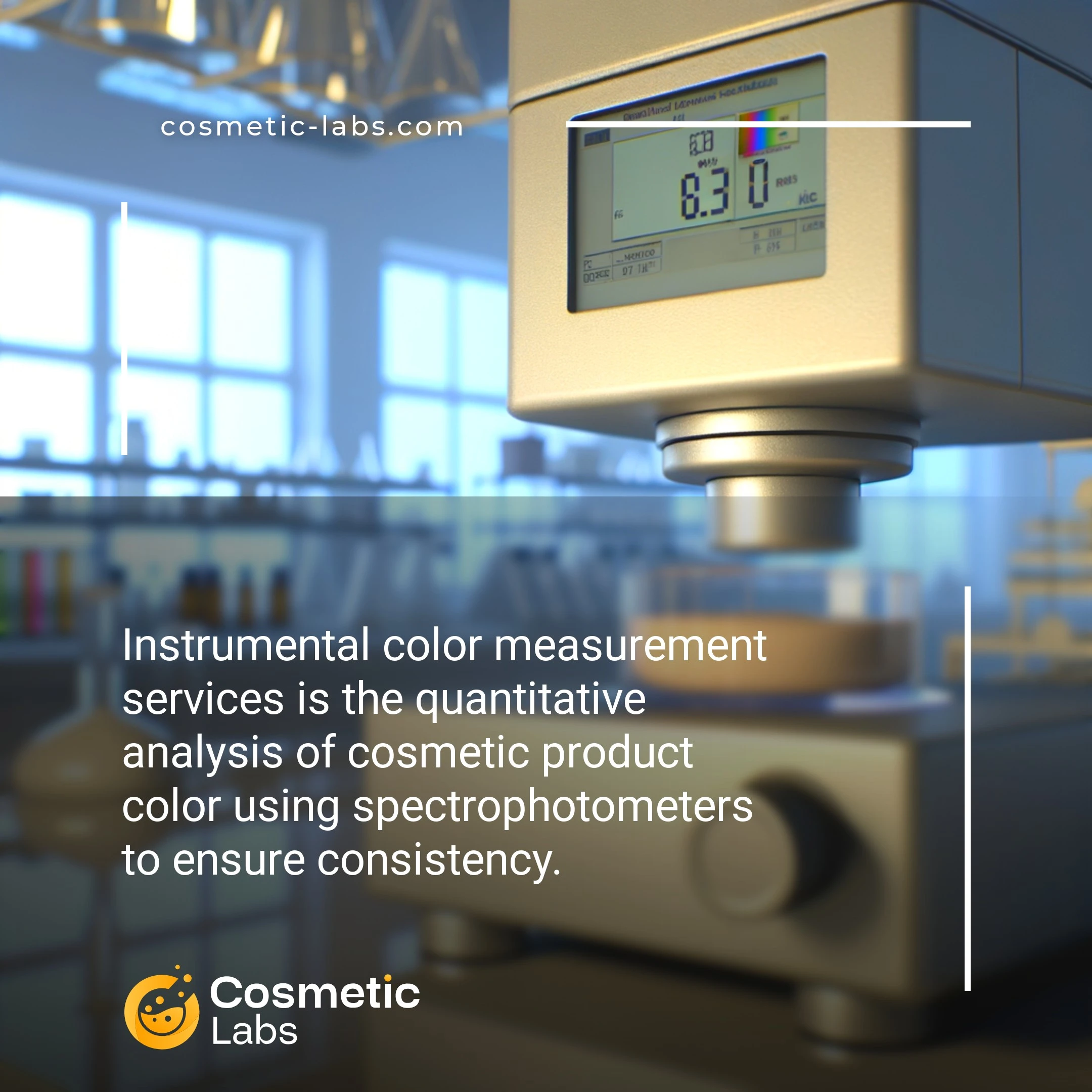Instrumental Color Measurement Services for Cosmetic Product Development

What is Instrumental color measurement?
Instrumental color measurement services use spectrophotometers and colorimeters to capture precise color data for your cosmetic products, measuring L*a*b* values that ensure batch-to-batch consistency. These lab services help you match foundation shades across production runs, verify lipstick colors meet brand standards, and document exact color specifications that suppliers need for raw materials—eliminating subjective visual assessments that vary between observers.
Why do you need this service?
Cosmetic labs use spectrophotometers and colorimeters to match foundation shades across production batches, ensuring your nude lipstick looks identical whether manufactured in January or July. These precision instruments detect color variations invisible to the human eye, helping labs verify that your coral blush maintains exact color consistency from prototype to mass production.
Who provides Instrumental color measurement services?
All cosmetic labs providing Instrumental color measurement services
There is no company providing these services at the moment.
Color Measurement Services for Cosmetic Products
Color consistency defines your brand’s identity. Professional labs use instrumental color measurement to match shades precisely across batches, ensuring your lipstick in Los Angeles looks identical to the one sold in London.
Spectrophotometer Testing Methods
Labs employ advanced spectrophotometers to capture exact color values for your products. These instruments measure light reflection and absorption, providing L*a*b* color space data that eliminates subjective color matching.
Key measurements include:
- Delta E values for batch-to-batch comparison
- Opacity and coverage testing for foundations
- Color stability under UV exposure
- Shade matching across different substrates
This data helps you maintain color standards whether you’re producing 100 units or 100,000.
Applications Across Product Categories
Different cosmetic products require specific color measurement approaches. Powder products need reflectance measurements at multiple angles, while liquid formulations require transmission testing.
Labs test color performance in:
- Lipsticks and glosses for color payoff
- Foundations across skin tone ranges
- Eyeshadows for pigment intensity
- Hair dyes for color development timing
These measurements help you predict how colors will appear on different skin tones and under various lighting conditions, reducing customer returns and building brand trust.
Practical Applications of Instrumental Color Measurement in Cosmetic Development
Color precision drives product success across every cosmetic category, from foundation matching to lipstick consistency.
Foundation and Base Product Development
Labs use spectrophotometers and colorimeters for shade matching across different skin tones and undertones. These instruments measure L*a*b* values to create shade libraries spanning 40+ foundation tones. Product developers rely on Delta E measurements to maintain color consistency between batches, keeping variations below 1.0 for consumer acceptance.
Color measurement also validates stability during accelerated aging tests. Labs track shade shifts at 40°C over 3 months, documenting any changes exceeding 0.5 Delta E units.
Lipstick and Color Cosmetic Quality Control
Manufacturing teams implement multi-angle color analysis for metallic and pearl finishes. Goniospectrophotometers capture color at 15°, 45°, and 110° angles to verify shimmer effects match approved standards. This prevents batch rejections that cost $10,000-50,000 per production run.
Labs also measure color payoff on synthetic skin substrates. Consistent readings ensure each lipstick delivers the same intensity whether it’s batch #1 or #1000.
| Measurement Type | Instrument Used | Typical Tolerance | Testing Frequency |
|---|---|---|---|
| Shade matching | Spectrophotometer | Delta E < 1.0 | Every batch |
| Metallic effects | Goniospectrophotometer | Delta E < 1.5 | First & last in run |
| Color stability | Colorimeter | Delta E < 0.5 | Monthly intervals |
| Opacity testing | Spectrophotometer | ±2% contrast ratio | Random sampling |
Partner with experienced cosmetic labs on our platform to implement precise color measurement protocols that meet your brand standards and regulatory requirements.
